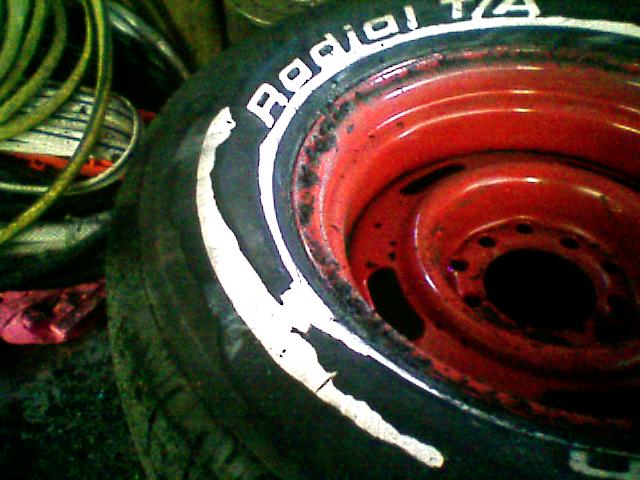OK - let me just start by acknowledging the video by my man Jeff Tanko that he put on youtube that shows how he did this. He's known on forums as "Bugman" - so maybe you've heard of him under that name. Either way - my man is legit, so here is the link to that video from another thread, courtesy of Dave the Chuggalugger:
- ChevyChugg wrote:
- porto-walls are hard to find...try this instead!
https://www.youtube.com/watch?v=xkcm3rh60p0
I followed Tanko's deal for the most part, but I'm posting in addition to the video to share what little tricks I learned along the way that he didn't specifically cover, which will hopefully either save you time or help you get better results than if you'd gone about it on your own. Another differenct is that he also used a 4" grinder with a special disk - and I didn't. My grinder was bigger and heavier, so I'm sure that I had to position myself differently than him.
The tool I used was my 7" polisher/sander that's supposed to be used to wheel out paint jobs with an abrasive disk adapter put on it. If you have a 4" grinder, great. I didn't and the adapter came from home depot for $16 with a 50 grit disk, so I used it.
So anyway, you have to start with a tire that's either a white letter tire or a white wall tire. Both of them have a big fat band of white rubber embedded under a very thin top layer of black. Removing the black to expose this band of white does not effect the structural integrity of the sidewall, so I gave it a shot.
Begin by putting the tire on a work surface that puts the top of the tire at a comfortable working height WITH the grinder in your hands. What worked the best for me was to set my grinder to run continuously so I didn't have to keep holding the trigger. I began using the right side of the grinding wheel on the left side of the tire. I ground towards myself in the inner side, and away from myself on the outer side. I stood in the same spot to maintain a constant position and angle - and after grinding only 3-5" worth, would rotate the tire clockwise and continue finding/following the line that I had already been working.
My advice - stand there with the grinder OFF going through the motions and try several positions of your arms, etc - to find the one that you can repeat the most consistantly. Having greater control of the grinder once it's on will reduce gouges, etc and it's worth the minute to figure it out before hand.
FYI - If you have a whitewall tire - leave the inside edge alone and just skip to the outer. The small amount of white you'll gain is not worth the loss of the crisp inside line you already have.
That been said - if you're using a white LETTER tire - proceed.
Once you've established your comfortable working position, start
lightly grinding near the middle of where you know the white will be until you begin to see a little bit of white. From there, gently grind your way to the INSIDE of the tire until you see the hard edge of where the white stops. Once you find that line, slowly "walk" that line towards you a little bit. What worked best for me was - standing with the tire in front of me - to use the 3 oclock position on the grinder at the 9 oclock position of the wheel - grinding to about the 8 oclock before rotating the wheel.
At this point, your tire should look similar to this:

"Walk" that inside edge all the way around the tire until you have your complete inner edge established. Then repeat that initial process for locating the outer edge. What worked best for me on the outer edge was to start at the 6 oclock position of the tire and walk that one away from me to about 7 oclock before repositioning it.

Keep that up until you have your inner and outer edges of your wide white defined.

From there, gently remove all the material in between. THEN - this made all the difference in the world for me. I used a small hand held orbital sander (you could probably also use a DA if that's what you have) and I went over the white wall one time. Mine had an 80 grit pad on it. Doing this makes all the world in your finished product because it smooths out all of the gouges, peaks, and grinder marks, and whatever other "edges" have happened inside the white.

And that's all it takes to turn your white letter or white wall tire into a WIDE whitewall tire.

For the price (free) I'm happy with mine, but your results may vary.
Peace and good luck.
John
